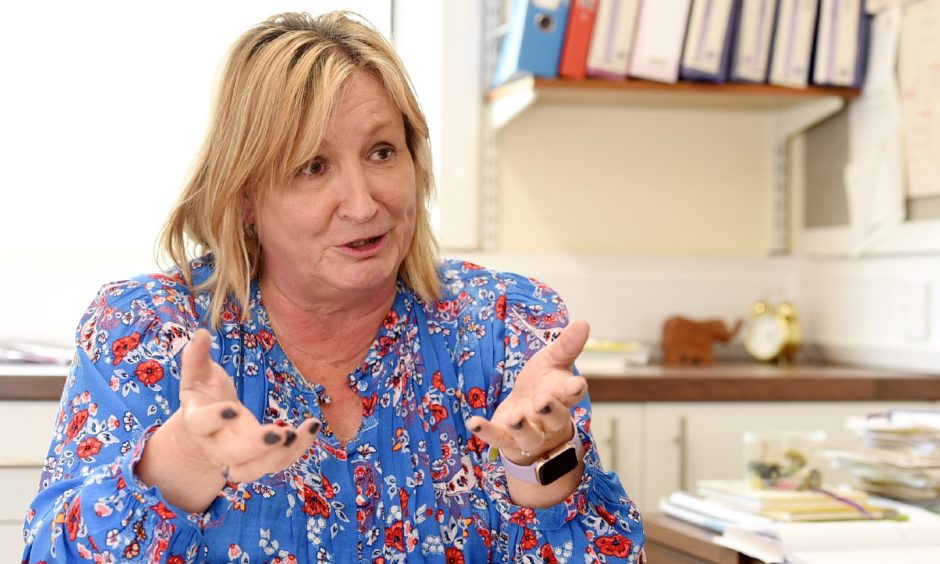
The head teacher of Speyside High School said she would consider banning mobile phones in school, amid “changes” in pupil behaviour.
Patricia Goodbrand said she had noticed a rise in physicality among boys, fighting among girls, and smartphone “addiction” since lockdown.
And she blames it largely on social media.
Mrs Goodbrand said rising violence in Moray classrooms is “a result of young people’s lives being led through social media.”
She said staff had “concerns about the wellbeing of young people being on their phones so much.”
She added: “If there was a move to completely ban smartphones it would be something I think we would consider.”
When asked whether she would support a ban on smartphones in school, she replied: “I would support looking into a ban.”
In a wide-ranging interview with The P&J, the head teacher said, however, that there are plenty of positives to talk about at Speyside High School.
We sat down with Mrs Goodbrand, who is also chairwoman of the Moray Secondary Head Teachers Association, for an exclusive interview. She told us about:
- The truth behind school league tables
- Finding the “happy medium” between higher education and learning a trade
- Smartphones, social media, and the impact of lockdown
- Aberlour’s “attractiveness” meaning a full staff amid a teacher shortage crisis
- Changes ahead to the curriculum
- The “mental agility” required as a head teacher
- What she gets “absolute joy” from
How are things at Speyside High School at the moment? What are the positives?
“The positives, well, where to start.
“It’s a school with a very welcoming feel to it, a very collegiate school.
“Our attainment at the moment is on an upward trajectory.
“I know there’s reservations around league tables, and I’m sure you’ve spoken to other head teachers about some of the feelings around league tables.
“As far as that data goes, the one measure that is reported on [% of leavers gaining five Level 6 qualifications, i.e. Highers or equivalent], we sit in the bottom two-thirds, which is not a fair representation of where Speyside High School is.
“If any other measures were taken, we’d probably be first or second in those areas.
“I’m especially very proud of our positive destinations, which I think is a measure of the overall achievement of a young person, not just one measure of their achievement.
“Our positive destination rate sits at around 97% to 98%. And that’s also over a five-year trend, not just one year like the league tables.
“If secondary schools are about developing a young person as a whole, then that is a much fairer measure of how well a school is doing.
“Because those young people moving on to positive destinations are going to become responsible adults and citizens that can contribute to society.”
Other head teachers I’ve spoken to aren’t a fan of those league tables either.
“I mean, that measurement wasn’t where it should be for our school, and we’ve done a huge amount of work to ensure that that is better.
“We should be around 50% – we were 31% last year – and moving into 60% plus.
“I look at these tables and think ‘I’m not happy with that’, but it’s an unfair representation of the positive experience young people are getting in school.
“And it’s not good for parents, it’s not a good measure to give parents to look at a school. They want to hear about what’s going well in schools.
“We have a bigger amount going on to apprenticeships, because of where we are, and the whisky industry. A huge amount of apprenticeships related to that industry in this area. And that sometimes affects our ‘five at Level 6’ measure.
“But that’s the right thing for them at that time. It’s not just distilling, there’s accountancy, HR, PR, everything.”
You’re echoing a lot of things other head teachers say about positive destinations. Do you think there’s perhaps too much emphasis on academic success and going to university, and not enough on learning a trade, for example?
“We’ve not found the happy medium.
“There’s a number of young people here for whom going to university is absolutely the right thing for them.
“But that push towards higher education has perhaps downgraded electricians, joiners and such people.
“I mean, they’re hugely talented people, and I worry that that has been downgraded a bit.
“Now we don’t have enough electricians, joiners, plumbers, who have huge skills, important skills, that allow us to work as a community.”
I recently spoke to a head teacher at another Moray secondary school, who told me their school was still struggling with the impact of lockdown. They said fighting, truancy, lateness, a lack of respect, poor social interaction, and anxiety had all got worse after lockdown, and that their school was still dealing with the consequences. As far as Speyside High School is concerned, what have you noticed?
“I can understand that feeling, definitely.
“There is a change that has happened, but I honestly feel that, now, I’m starting to get to grips with what those changes have been.
“Here, we’ve worked really, really hard on attendance, and supporting young people to be here, through our curriculum and interventions, to manage those changes.
“Young people are different now since coming back from Covid.”
In what way?
“Social media.
“They rely on social media more. And I do worry that when they were in lockdown, that was how they were in touch with everybody, and that continues to be the way they’re in touch with each other.
“Social media, I’d say, is the biggest problem. And it leads to these other things becoming problems.”
There’s a growing movement among parents – and some teachers – to ban smartphones from schools. Would a ban on smartphones be something you would consider at Speyside High School?
“We have a clear policy that phones should not be out in class. They should not be out in corridors when walking between classes. We’re very clear on that.
“If there was a move to completely ban smartphones it would be something I think we would consider.
“If we can go to these dumbphones [phones with only basic functions like calling and texting], that would be better.
“There seems to be more of a need now from parents to be able to be in touch with their child directly. That can be tricky.
“But then there are parents who are very clear that they pay for the phone, so how their child uses the phone is up to them. And that is so heartening, because they check it every night and they know what’s going on.”
Is smartphones something that’s been discussed in the staff room?
“Yes. Absolutely.
“Just concerns about the wellbeing of young people being on their phones so much.
“And that addiction to the phone, and the consequences of relationships developed over the phone, rather than face-to-face, and people getting involved in things they previously wouldn’t have.
“Previously, if someone fell out, that was it. Whereas now, it goes on to group chats or whatever, and other people get involved in things that have nothing to do with them, and it grows arms and legs.
“It’s not good for anybody.”
You spoke about changes since lockdown. What other changes have you noticed?
“We were actually speaking about this before: we notice that boys who are now in S3 and S4 – what stage they were when they were in Covid lockdown I can’t quite work out – they’re much more physical with each other than they would normally have been at S3 and S4.
“It’s almost like that hierarchy of where these lads are hasn’t been sorted when they were younger.
“They grab each other and they’re patting each other on the head all the time, there’s fist pumps in the corridors, banging into each other’s shoulders and things like that.
“It’s not what they used to do.”
Have you noticed more fighting?
“Well, not with boys. Girls, on the other hand…but again, it’s social media that fuels it.”
You’ve noticed more fighting among girls since lockdown?
“Yes. We’ve had more experience of that.
“It’s social media. Now, I’m going to tread very carefully here, because there’s things that have happened in the school…but I would say girls are more involved in that, and it’s because they get more involved on social media. And then it spills into school the next day.”
Classroom violence is on the rise in Moray secondary schools. Between April and October 2023 a total of 1,647 violent or aggressive incidents in Moray schools were recorded. That compares with 537 over the same period the previous year – an increase of 206%. And equivalent to 86 incidents a week, or 17 a day. What are your thoughts on that?
“I think it’s what I’ve said to you already, social media has led to a lot of these things happening that wouldn’t previously have happened.
“And I think that’s a result of young people’s lives being led through social media.”
But doesn’t that make you think: can we do something about this? Surely the logical conclusion is to ban smartphones?
“Surely it is, yes.”
So you would support a ban on smartphones in school?
“I would support looking into a ban.”
Many parts of Scotland are undergoing something of a teacher shortage crisis. What’s the state of play in Moray secondary schools? And how is the situation at Speyside High School?
“It’s a problem across Moray for different subjects – technical, very much so, maths teachers can be tricky to find as well.
“Currently, at Speyside High School, we’re okay, we’re doing okay with recruitment.
“We will start the new school year with a full quota, other than half an English teacher. Which is a pretty good place to be at this time of the year.
“But I know other schools in Moray are not in that position.
“I do think that, at the moment, Speyside High School is seen to be doing quite well, through attainment, achievement, and just overall it’s quite an attractive place for teachers to come.
“Physically, it’s a very attractive place for teachers to come and live, so we are quite lucky.
“And we don’t have a huge issue with teacher retention. When people come here, they tend to stay.
“But we have had times when we’ve struggled – it took us two, three years to find a technical teacher, for example. This time last year we couldn’t offer woodwork and technical education, which is so important for those young people going into apprenticeships.
“So I’m not saying it won’t happen again, but currently we’re in a position where everything we want to offer, we can offer, which I’m delighted with.
“One of the biggest things, I’ve always said, as a head teacher is managing staffing.
“It’s just a constant conundrum at times. You think you’re fully staffed, and then suddenly circumstances change.
“It’s a long process replacing a member of staff, it’s never back-to-back, you’ve always got that gap between somebody leaving and getting somebody new in.”
What changes do you foresee at Moray secondary schools in the next few years? How will things look in, say, 10 years’ time?
“Well, I’m 58 so…”
5 years’ time?
“Ha ha, yes. Well, I think Aberdeenshire have really shown a way forward with their Foundation Apprenticeships, and that’s a big success. We’re clearly looking at that model and how that can be used in Moray secondary schools. That’s a big one.
“Project-based learning as well, you know, pulling down the barriers between subjects a bit more.
“We do an inter-disciplinary learning week, during which pupils are off-timetable and choose a project they want to look into, and work individually on that. This is First to Third Years.
“Over the three years that we’ve run this, the difference in how the young people have managed it and taken much more responsibility for their learning is remarkable.
“So we’re delighted that we’re managing to get that into the curriculum, not just annually, but throughout the curriculum next year. That’s a big curricular change for us.
“The kids really need engaging, relevant activities, and that’s how this low-level disruption is avoided.
“I think we’re on a good journey, a good route to that.”
What’s the biggest challenge in being a head teacher at a secondary school?
“It’s the mental agility between the things you’re dealing with. But then, that’s the joy of it as well.
“On a morning I can be sitting watching some of our Sixth Years who are heading off to university doing a presentation, and then at lunchtime, like I was yesterday, playing Uno with some of our ASN kids.
“And the questions that I get in between it all. It’s keeping all that on the boil at the same time.
“But again, that’s the joy of it. All that interaction.
“You don’t do this job if you don’t enjoy being with teenagers.”
What is rewarding about the job?
“Where do I start?
“It’s the joy of seeing young people coming here in S1 and seeing them develop to where they are when they leave here, and their journey throughout that, the ups and downs. And being able to support, and challenge, during that time.
“It’s an absolute joy.
“A lot of my job can be desk-bound, that’s the nature of it, but the resilience I get from speaking to young people, I mean I could probably tell you a story about every single young person at this school.
“And if that’s not what you get joy from, then you shouldn’t be doing the job.
“Working with teenagers is brilliant, if demanding.
“They make mistakes, but that’s part of them being here, learning from those mistakes and us helping them develop so that they make better choices in future. And most of them generally do.”
Education hasn’t been without its challenges in recent years. How confident are you that Speyside High School has a bright future? What would your message to parents be?
“Our motto here is to be happy, healthy, and high-achieving.
“We’ve got such a good team here, and it’s not just teaching staff, the whole school works together – parents, young people.
“We’ve a no-blame culture here, we work hard to ensure that young people get the best opportunities.
“And I think our attainment shows you that. Our welcoming atmosphere shows you that. And the feedback from parents is that that’s the case.
“So I think Speyside has got a great future.”
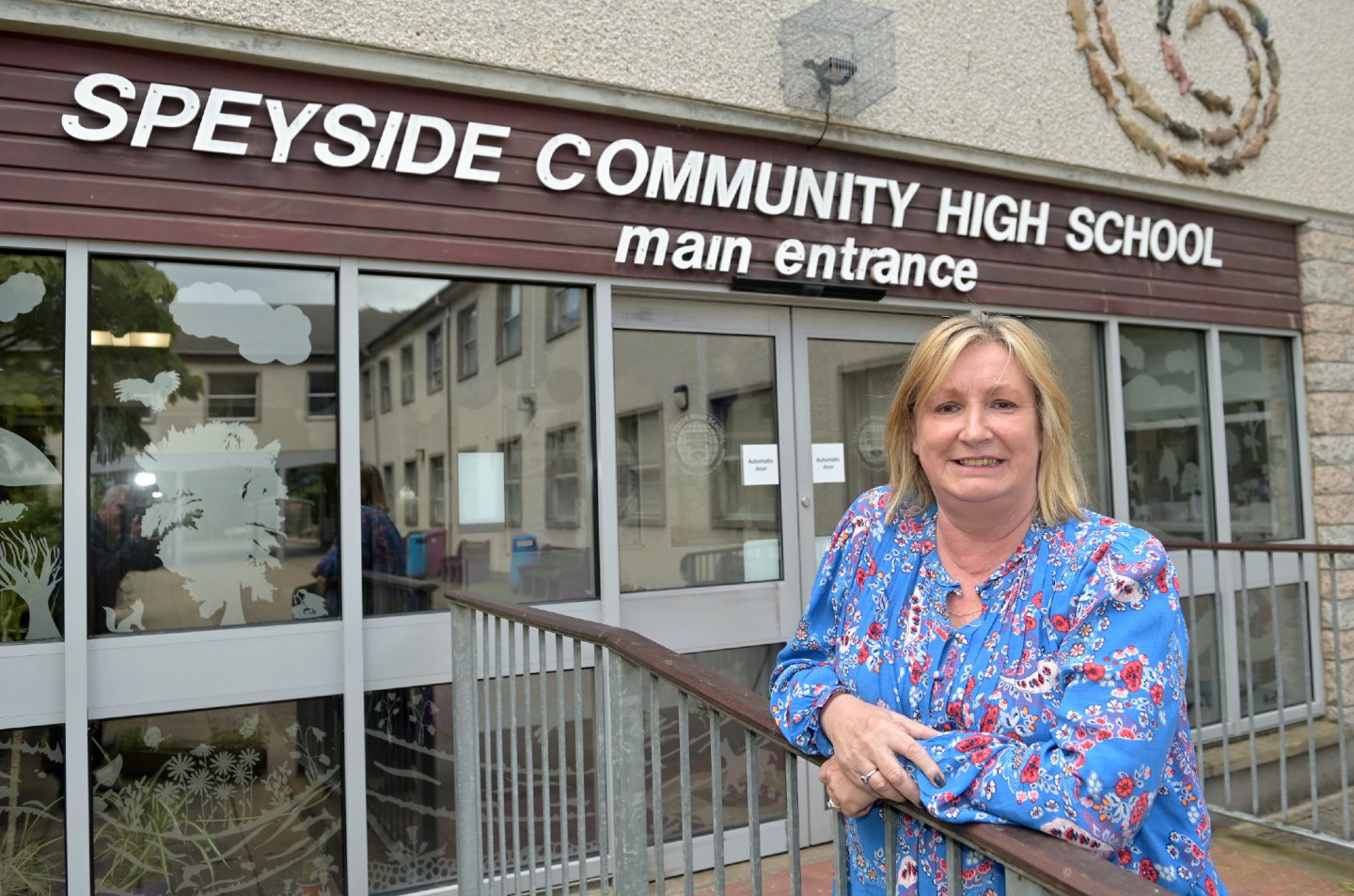
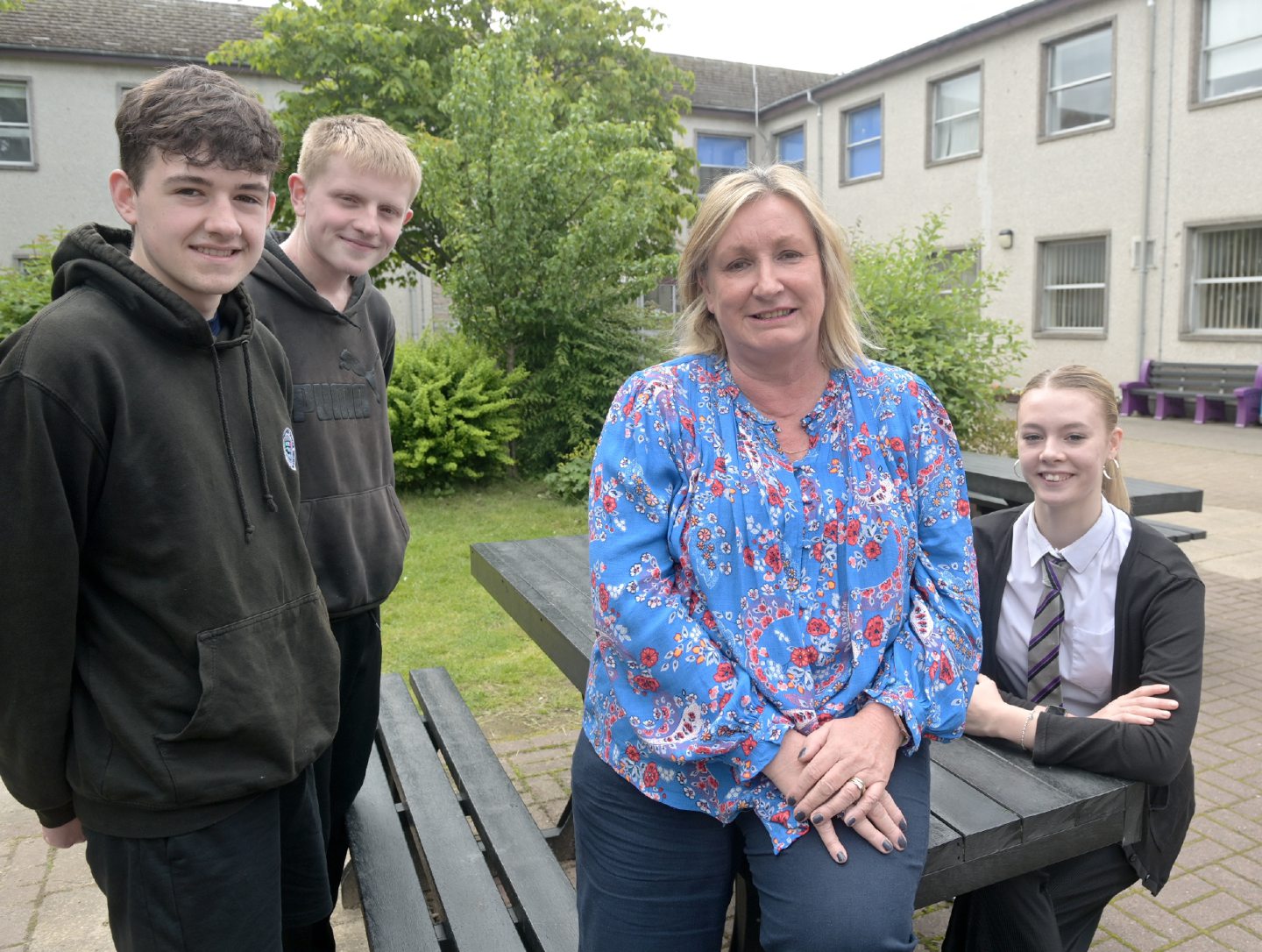
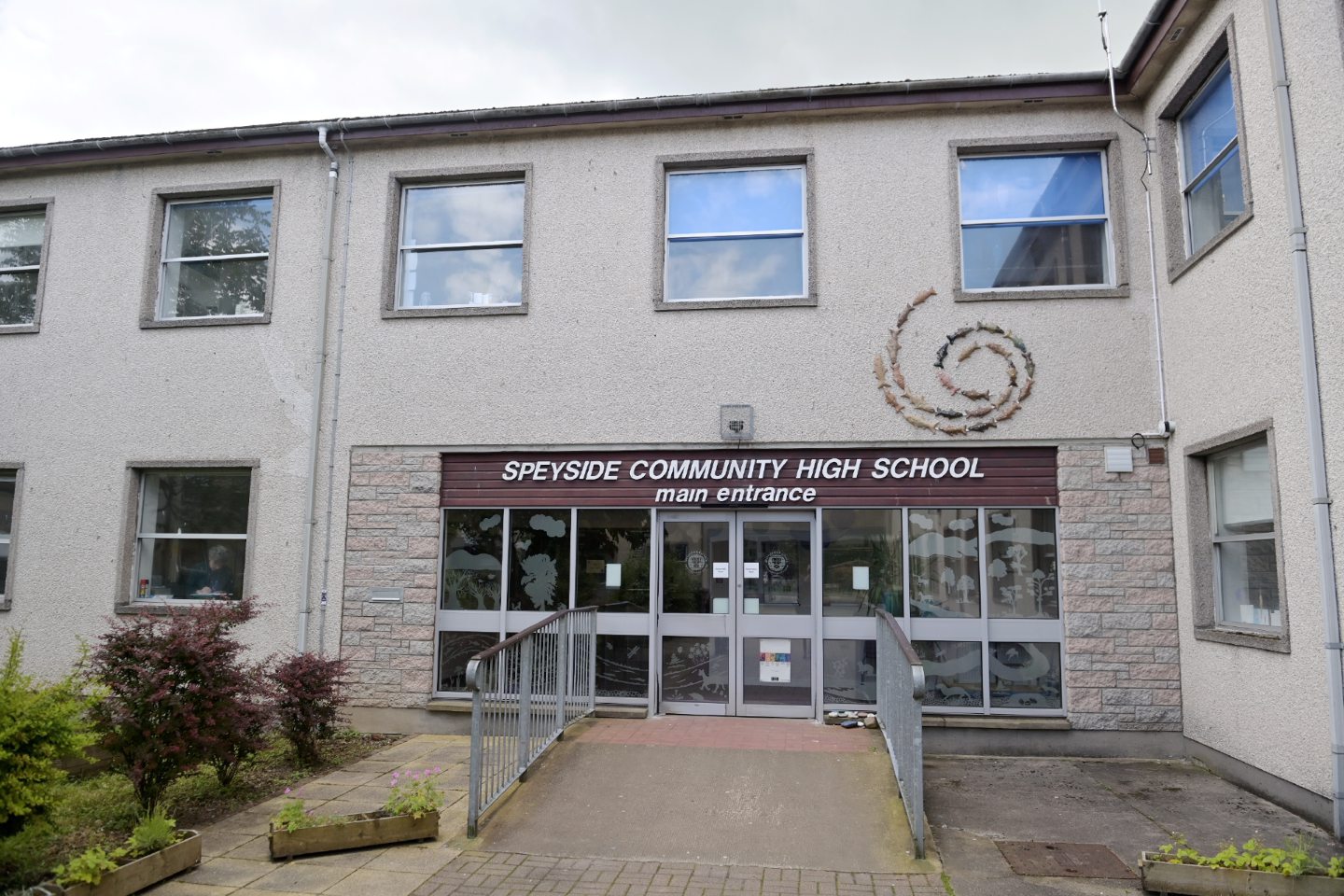
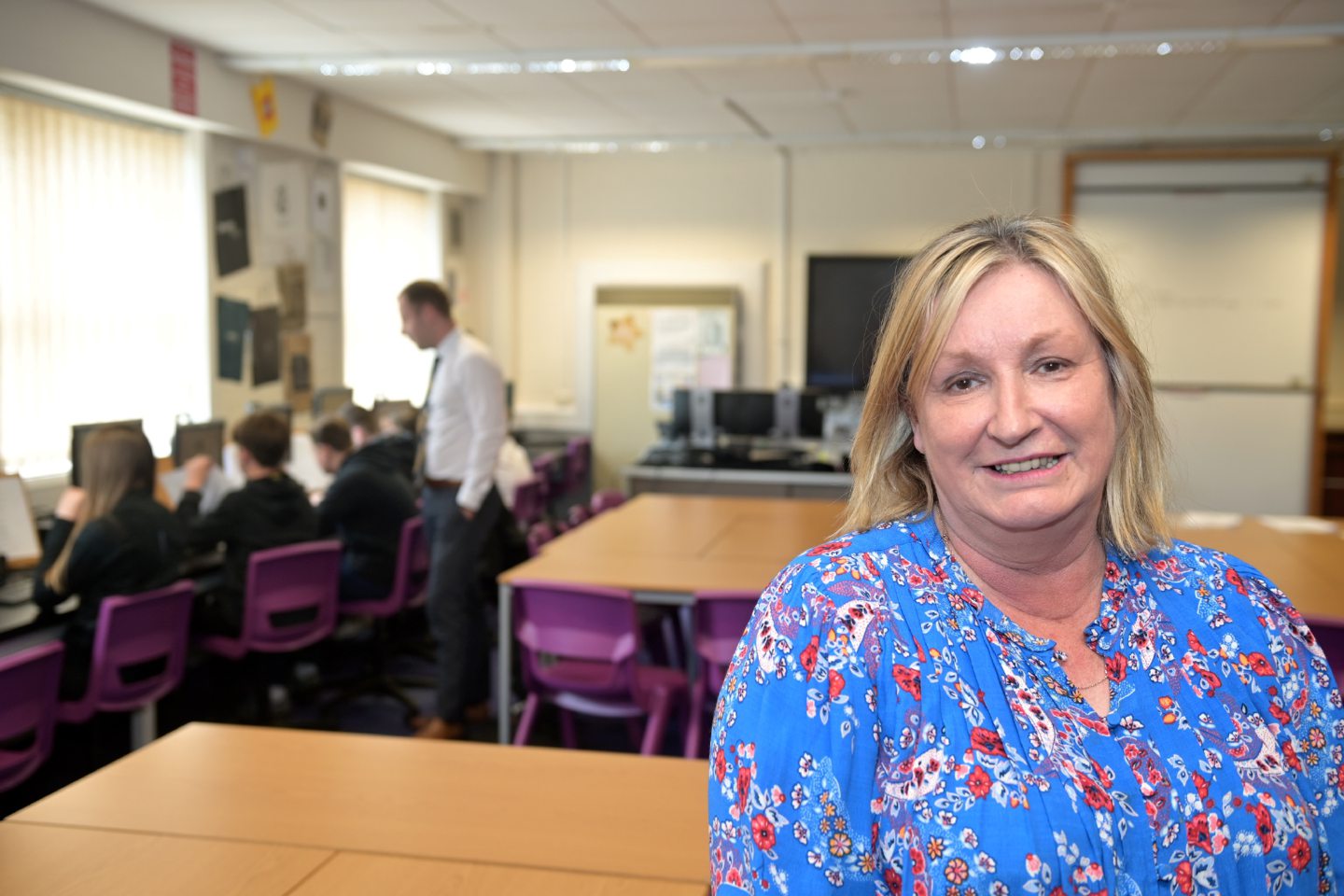
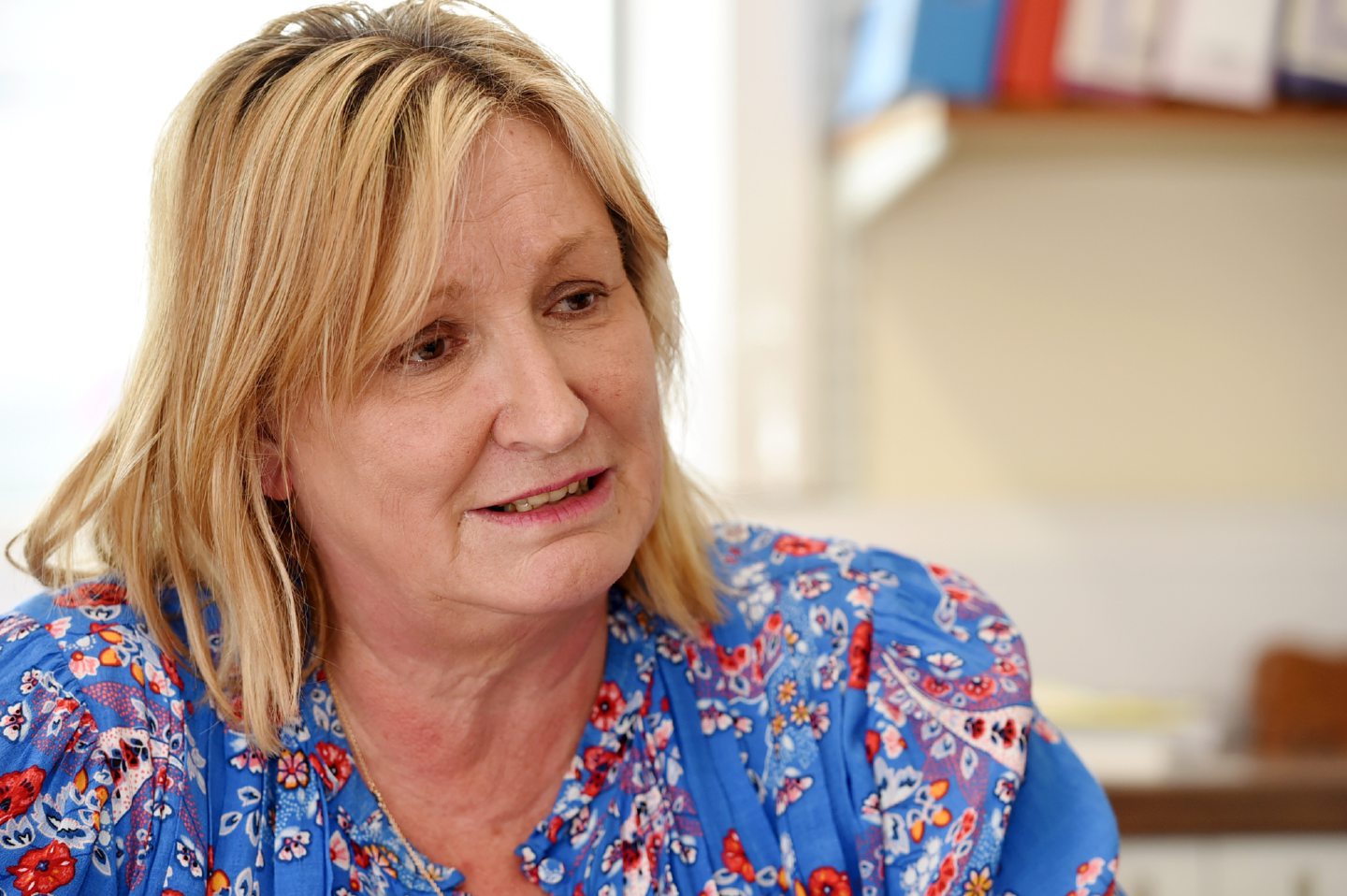
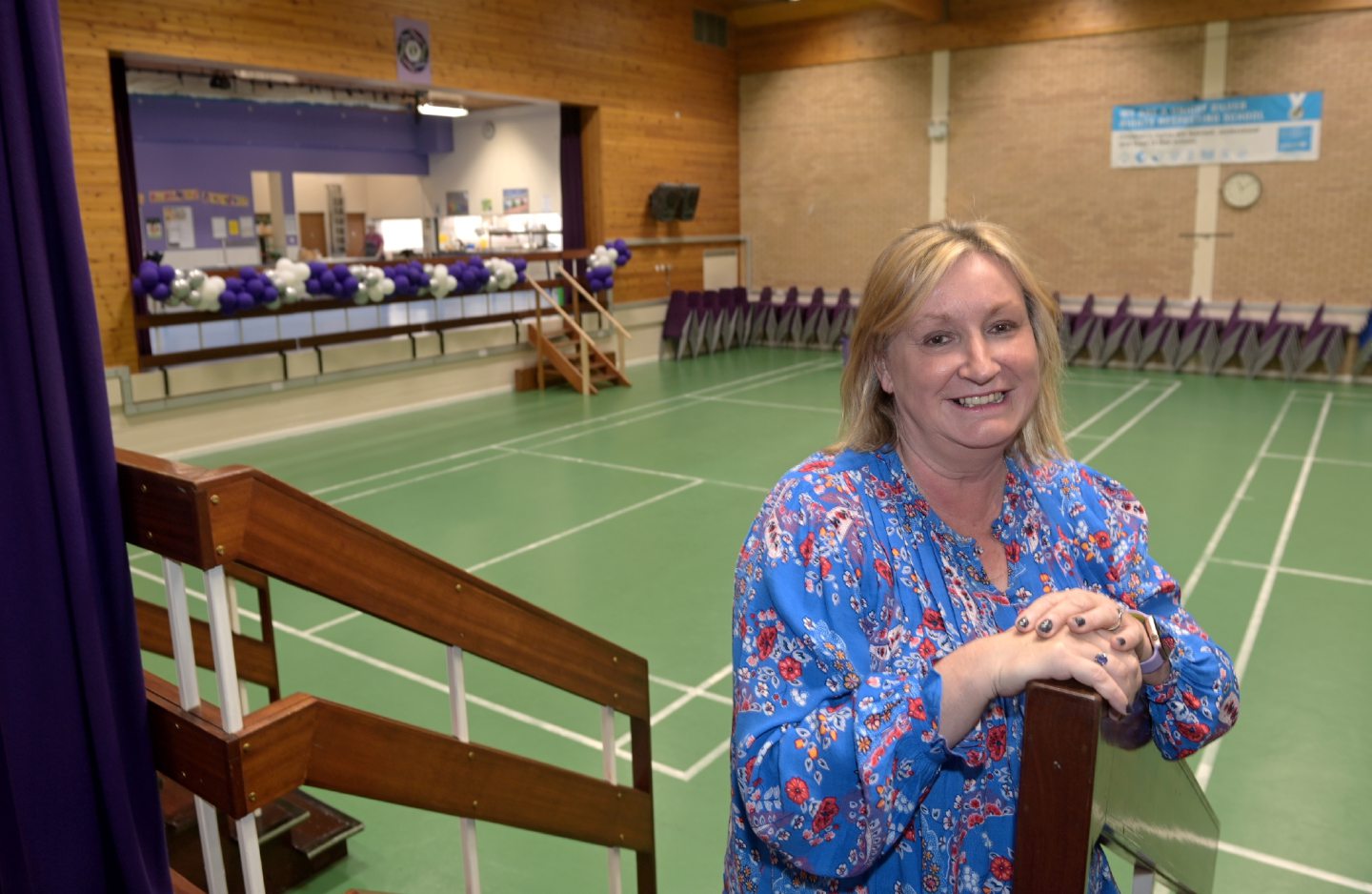
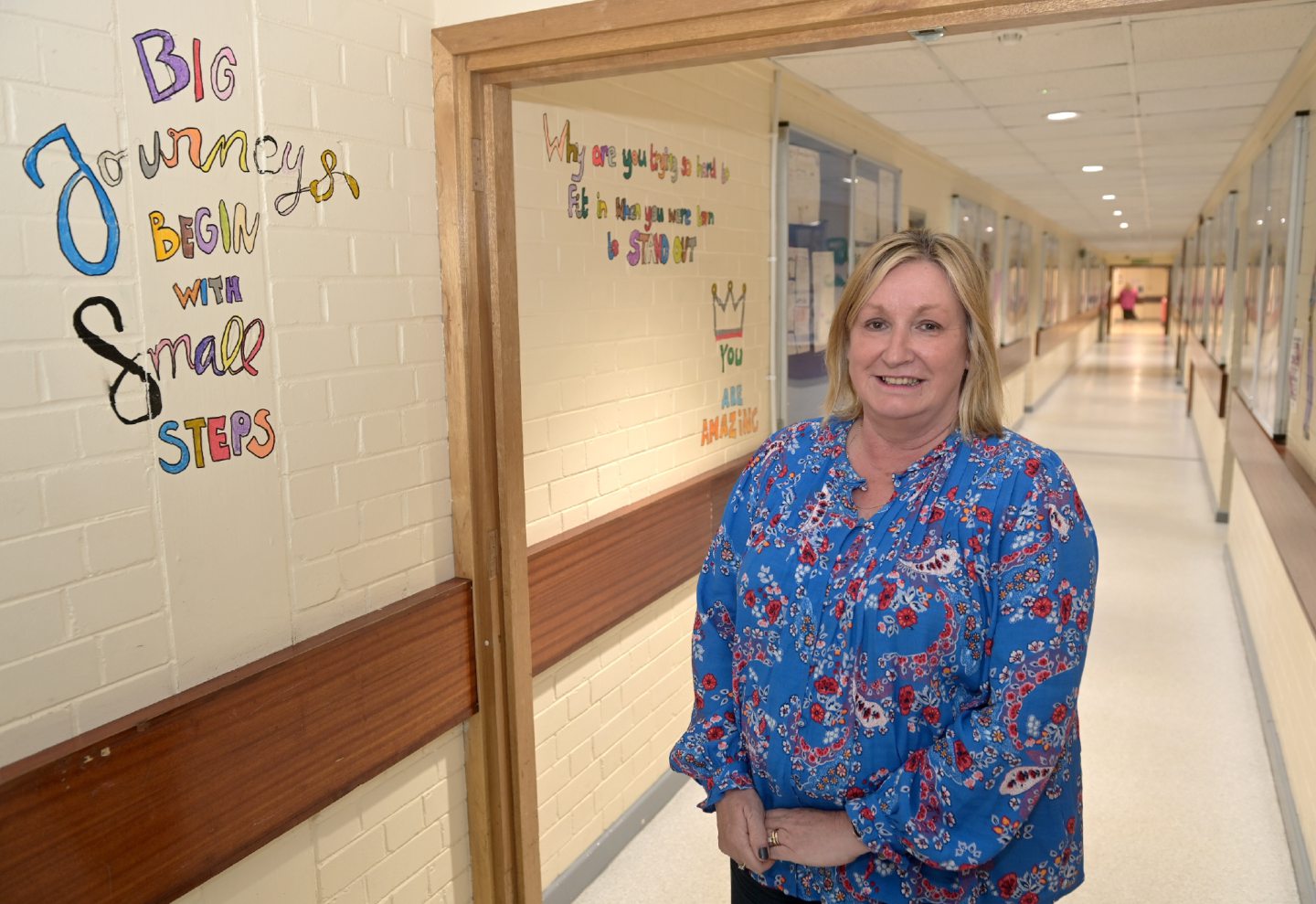
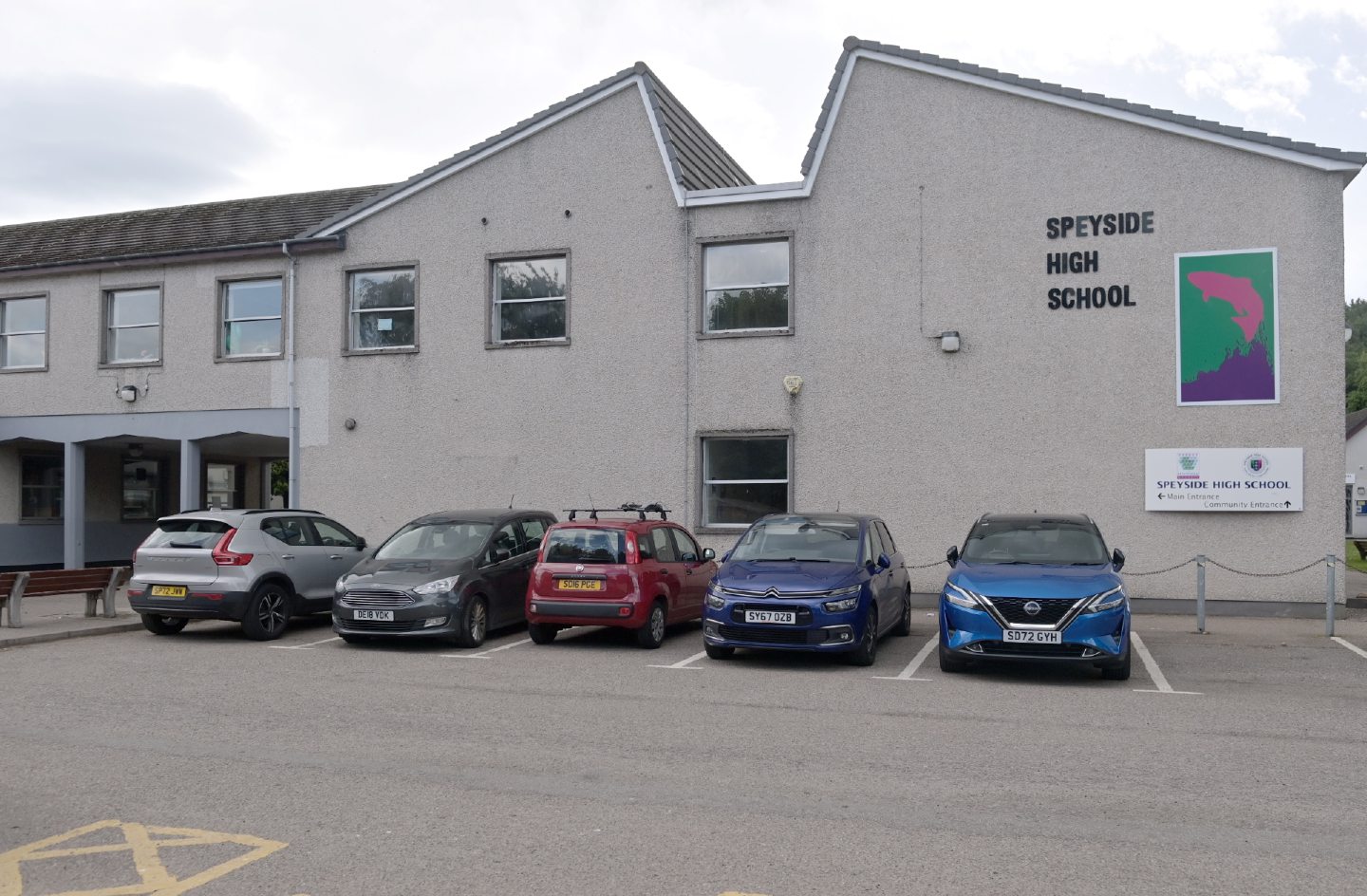
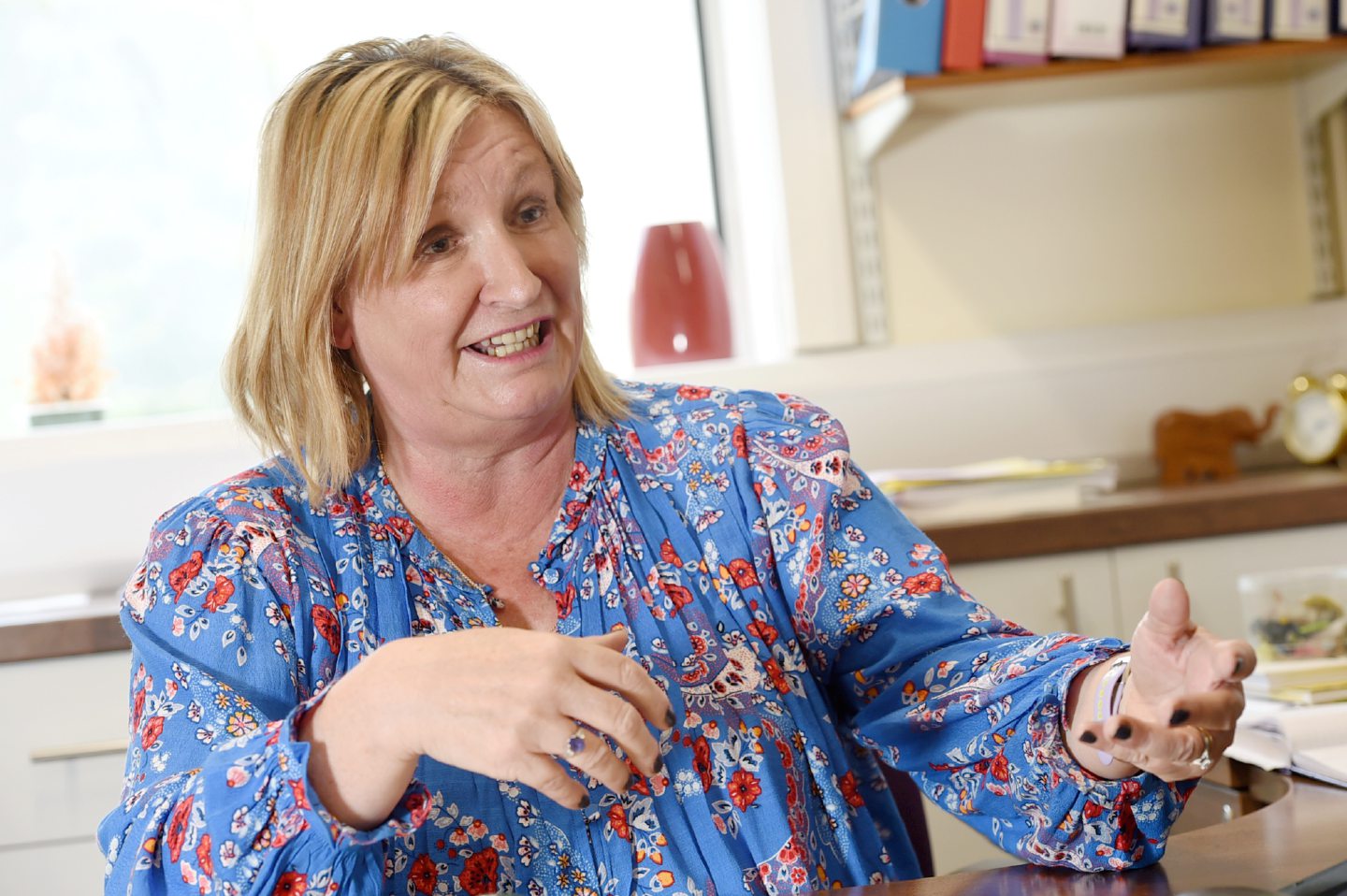
Conversation